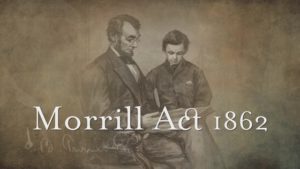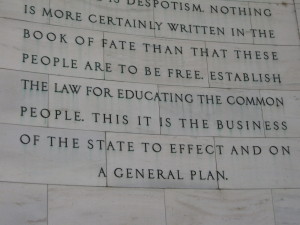What do we want? Don’t you generally hear ordinary citizens say, “I want my children to get a good education”? How many of we garden variety citizens say, “I want my kids to graduate from high school ready to score higher on standardized tests”?
If people don’t understand the proper uses of testing and can’t recognize the misuses of standardized achievement tests, then they can’t possibly know that the country has the wrong goal for public education — set in law and in the minds of Americans.
The “achievement gap” is defined by standardized achievement tests. It can serve as one monitor of equal opportunity. It should not be THE goal of the public education system — but IT IS!
“To close the achievement gap” is a test-based goal set by No Child Left Behind. In Idaho, our state school officer, Mr. Luna, points out that “…results not only show a majority of Idaho schools are high-performing, but also that a vast majority of students are performing at or above grade level in reading and mathematics…While I praise these results, I also know the reality behind this data: Though students are performing better than ever in K-12, they continue to struggle after high school.”
His conclusion is that the standards must be higher and the tests better but that is because he fails to see, or won’t admit, the flaw in the outcome-based (test-based) theory — it narrowed curriculum to what was tested and that isn’t good enough. It isn’t good education; it did meet the test-based goals.
Mission accomplished? – test scores up / students unprepared for life because of a narrowed, test-based curriculum!
UPDATE 5/4/15: The marketing of No Child Left Behind deliberately targeted the largest group we have failed to educate well – black Americans. Why would we continue with this failed outcome-based theory of reform? Because we have been told?









